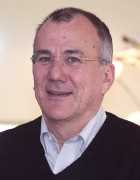12 Apr Rather Than Inhibiting Regrowth, Spinal Cord Scars May Support Nerve Healing
MedicalResearch.com Interview with:
Dr. Michael V. Sofroniew, MD PhD
Professor of Neurobiology
David Geffen School of Medicine
UCLA
MedicalResearch.com: What is the background for this study?
Dr. Sofroniew: For over seventy-five years, it has been thought that scars formed by cells called astrocytes actively prevent the regeneration of damaged nerve fibers (also known as axons) across injury sites in the brain and spinal cord. This view was based largely on two forms of circumstantial evidence:
(1) after injury, damaged nerve fibers do not regrow past astrocyte scars and appear to be ‘stalled’ within them;
(2) astrocytes (along with other cells) can produce molecules that inhibit nerve fiber growth in cell culture experiments.
We also initially subscribed to this inhibitory view of astrocyte scars and about twenty years ago my lab began to develop experimental tools that allowed us to prevent astrocyte scar formation in mice. The hope was that preventing astrocyte scar formation would lead to nerve fiber regeneration across brain or spinal cord injuries. Unfortunately, although we were successful in preventing scar formation, we never saw any regrowth of nerve fibers in spite of multiple different attempts over many years of work. We were disappointed and held back from publishing those results, but kept thinking about the problem and looking for new ways to study it. Over the last five years, new tools and information became available that allowed us to return to this question and probe further. We kept getting similar kinds of results and eventually we collected enough different types of evidence to convince ourselves that the original view that astrocyte scars prevent nerve fiber regrowth was incorrect.
MedicalResearch.com: What are the main findings?
Dr. Sofroniew: We found that after preventing astrocyte scar formation, or after removing chronic astrocyte scars, there was no spontaneous regrowth of damaged nerve fibers and that instead, the nerve fibers retracted further back away from spinal cord injury sites. We found that both astrocytes and other cells in the injury sites produced numerous molecules that could support nerve fiber regrowth along with molecules that might repel or inhibit it. This suggested a complex molecular environment that needs to be studied more. We also found that when appropriate growth factors were applied locally into the injury site, nerve fibers could be stimulated to regrow in spite of astrocyte scar formation, and that this stimulated regrowth was significantly reduced, and not improved, when scar formation was prevented. Together, these findings show that rather than being major inhibitors of nerve fiber regrowth, scar-forming astrocytes can be supportive of such growth.
MedicalResearch.com: What should clinicians and patients take away from your report?
Dr. Sofroniew: The experimental techniques that we used in mouse models cannot be directly applied today in patients. But we think that our work is an important scientific step toward developing rational and effective strategies to get nerve fibers to regrow across severe brain or spinal cord lesions.
MedicalResearch.com: What recommendations do you have for future research as a result of this study?
Dr. Sofroniew: The dogma that astrocyte scars inhibit nerve fiber regeneration has been handed down through multiple generations of researchers and clinicians. For many years there has been a strong focus on trying to inhibit astrocyte scars to improve outcome after CNS injuries. When you grow up thinking something is true, the threshold for challenging it is high. We think that our work will help open doors to new areas of research that have for some time been avoided due to an incorrect dogma. We think that rather than trying to remove or inhibit astrocytes at injury sites, their beneficial functions should be characterized and examined for potential exploitation in novel therapeutic strategies.
MedicalResearch.com: Is there anything else you would like to add?
Dr. Sofroniew: Sometimes scientific viewpoints based on circumstantial evidence can remain untested for long times because the tools for direct tests are not available. Such viewpoints can become entrenched as dogma. Nevertheless, when new data are inconsistent with such viewpoints it is important to examine what they are based on and if appropriate, to challenge them.
Citation:
Mark A. Anderson, Joshua E. Burda, Yilong Ren, Yan Ao, Timothy M. O’Shea, Riki Kawaguchi, Giovanni Coppola, Baljit S. Khakh, Timothy J. Deming, Michael V. Sofroniew.Astrocyte scar formation aids central nervous system axon regeneration. Nature, 2016; DOI:10.1038/nature17623
[wysija_form id=”5″]
Last Updated on April 12, 2016 by Marie Benz MD FAAD

